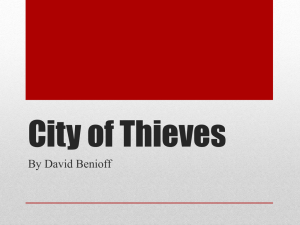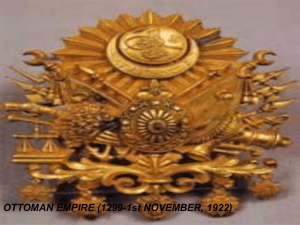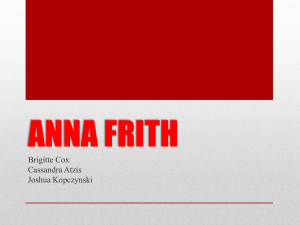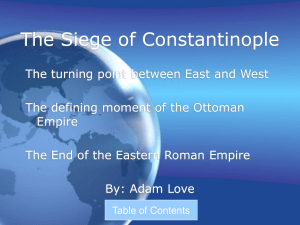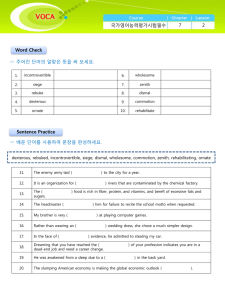File
advertisement
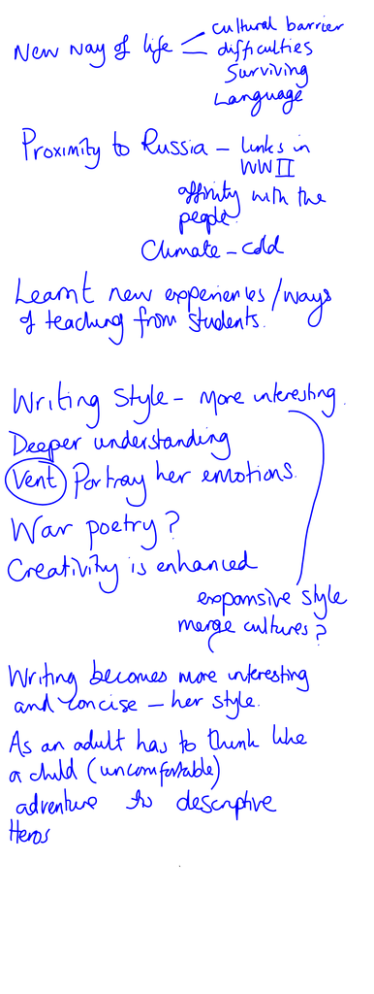
` Title: The Siege Dates:12thSeptember Aims: How do we put a novel in context? What happened in Leningrad? Keywords: context, Leningrad, Survival What do we know about Leningrad? ‘Leningrad’ is one of the names given to Russia’s second largest city (after Moscow). Until the Russian Revolution of 1917, the city was called St Petersburg (after Czar Peter the Great who founded it in 1703) and it was Russia’s capital and seat of government. In August 1917, following the first wave of the Russian Revolution, the city was renamed ‘Petrograd’. Six months later, Russia’s capital and seat of government was transferred to Moscow because the civil war raging nearby made the city unsafe. Then, in 1924, after the death of Vladimir Lenin, one of the main leaders of the Russian Revolution, the city was renamed ‘Leningrad’. The city continued to be called Leningrad until the fall of Communism in the 1990s, when it was given its original name of St Petersburg again. Situated near to the Arctic Circle on the coast of the Baltic Sea in north-west Russia, St Petersburg (Leningrad) has a climate notable for long, severe, snowbound winters, and very short summers during which ‘day’ never really becomes ‘night’. The Siege of Leningrad? The siege of Leningrad The siege of Leningrad began in September 1941, less than two months after Hitler’s armies invaded the Soviet Union (on 22 June). By the beginning of September, the German forces had cut off Leningrad by land. The only way for goods to be transported into and out of the city was over Lake Ladoga from Soviet-occupied Finland. The actual siege continued for 900 days, ending in 1944, although the duration of the novel The Siege is only one year. Date: 13th September Title: The Siege Aim: How we would cope with a Siege? Writing about a Siege in different styles Keywords: Under siege At the centre of the novel is what happens when a city of civilised individuals finds itself besieged, with the food running out and a viciously cold winter setting in. · · How do you think that you might react in this situation? How do you think you would survive? In your group, discuss these questions. Consider the following in particular: Food Heating Clothing Work Schools Transport Family Other people Working Sanitation Hospitals Medical services Write a diary entry of your experiences during an imaginary siege. (200 words) Write the first few paragraphs (W<W<W<W<W) of a newspaper report on a siege Write a school history book style paragraph on an imaginary siege (200 words) Under siege At the centre of the novel is what happens when a city of civilised individuals finds itself besieged, with the food running out and a viciously cold winter setting in. · · How do you think that you might react in this situation? How do you think you would survive? In your group, discuss these questions. Consider the following in particular: Food Heating Clothing Work Schools Transport Family Other people Working services Sanitation Hospitals Medical Title: Aim: Date: 13th September The Siege How we would cope with a Siege? Writing about a Siege in different styles Keywords: There are thirty chapters in The Siege. In order to understand the novel, it is easier to break these chapters up into sections. I have divided the novel into FOUR main narrative sequences which ‘tell the story’. These are: 1. 2. 3. 4. Before the siege The siege begins The height of the siege Epilogue – – – – Chapters 1–5 Chapters 7–15 Chapters 17–29 Chapter 30 There are also other chapters, or parts of chapters, which I have called ‘Interludes’ or an ‘Aside’, depending upon their length. These are: 1. 2. 3. Interlude 1– Interlude 2– Aside Mikhail’s Diary (Chapter 6 & part of Chapter 9 – pages 71–5) Pavlov and the administration of the city (Chapters 14, 16 & 27) – Marina’s account of her affair with Mikhail (Chapter 22) We will consider the narrative sequences first, followed by the Interludes and the Aside. Title: The Siege Aim: Characterisation Date: 16th September Writing about a Siege in different styles Keywords: Focus: Characters By the end of Chapter 1, we have met four out of five of the main characters in the novel, Anna, Mikhail, Kolya and Marina. Russian people generally have up to four names: a first name; a patronym (father’s name) usually ending with ‘-ich’ for a male and ‘-ovna’ for a female; a family name; a ‘pet name’ used by family or close friends. The characters Using a separate sheet, fill in the details for each of the four characters, as they occur. Keep the chart safe, adding to it as you read through the novel, with page references and brief quotations cited as evidence. Use the chart to make a record of what you learn about each character. Title: The Siege Aim: Characterisation Date: 16th September Writing about a Siege in different styles Keywords: Focus: Characters Character traits Consider the three main adult characters, Anna, Mikhail and Marina. Who do you think is: · · · · · · · the most practical? the most unrealistic? caring? thoughtful? the most altruistic (thinks most of others)? artistic? formal in speech? Find evidence in the text to support your choice as you read. There may be more than one of the characters with each trait. Title: The Siege Aim: Characterisation Date: 16th September Writing about a Siege in different styles Keywords: Who is Anna? We are told in the chapters in Narrative Sequence 1 that Anna works as a nursery assistant for a woman called Elizaveta Antonovna. Imagine that you are Elizaveta and you have to write a report about her. Make the report very formal, including the following headings: Ø Full name Ø Family background Ø Attitude to work Ø Attitude to the children Ø General character Ø Recommendations Refer closely to the text as you write the report. Title: The Siege Aim: Setting Date: 20th September Analysing the setting in the first sequence Keywords: The paragraph beginning “These are hard times ...” on page 1, and ending “... in that van this time.” on page 2 refers to life in the Soviet Union under the leader Stalin in the period leading up to the Second World War. · Why is this paragraph important at the beginning of the novel? · What does it tell you about the lives of ordinary people in Leningrad before the siege begins? · In what ways does this paragraph convey the sense of terror that everyone lived under during this period? Consider the language used, the sentence lengths and the images used. The countryside around Leningrad Write a brief descriptive paragraph (150-180 words) about each of the following: Ø Anna's dacha (country house)p. 3-4, 8, 10, 15, 16, 18, 35-36 Ø Marina's dacha p. 25, 28, 29, 30, 31, 32, Ø The journey Anna makes from her dacha to Marina's 23, 28, 29, 35 Choose one of your descriptive paragraphs and turn it into a persuasive Real Estate advertisement Title: The Siege - style Date: 27th September Aim: What is point of view? What point of view is used in 'The Siege' and why? The use of tenses and their effects Keywords: point of view, style, tense What would be your Russian name? first name patronym family name pet name In literature, particularly novels, a is the related experience of the narrator, or storyteller, not that point of view of the author. In The Siege, the point of view often seems to shift from one perspective to another. There are four points of view available to an author: · · · · First person the narrator is a character in the story Second person unusual and difficult to manage Third person limited picking one character and following him or her Third person omniscient shifting from character to character with knowledge of everyone’s thoughts and actions In this novel, Helen Dunmore uses all four points of view. The first-person point of view occurs rarely, mostly in the ‘Interludes’. The second-person point of view occurs just as rarely, usually to draw the reader into the story at a point of description or when a setting is being explored. Most common are the two third-person points of view. On pages 4-6 of Chapter 1 we are introduced to Anna' s father, Mikhail, through a third-person omniscient point of view description of his appearance “in front of a magazine committee”. Rewrite 250 words of this passage from a first-person point of view as if Mikhail is telling Anna about the incident. ·What changes do you have to introduce? What difference does this make to the reader’s (your) understanding of what happened? Title: The Siege - narrative sequence 2 Aim: Working on the Luga Line Who are the minor characters? Keywords: Narrative, Characterisation What was the Luga line? Date: 4th October Title: The Siege - narrative sequence 2 Date: 4th October Aim: Working on the Luga Line Who are the minor characters? Keywords: Narrative, Characterisation There are six significant incidents in Chapters 7 and 8 related to the working party to which Anna belongs. Using the storyboard framework (on a separate sheet), recount each incident in some detail. You should use both words and pictures Event 2 Event 3 Event 5 Event 6 Event 1Anna digging on the Luga Line. Event 4 Title: The Siege - narrative sequence 2 Date: 4th October Aim: Working on the Luga Line Who are the minor characters? Keywords: Narrative, Characterisation There are six significant incidents in Chapters 7 and 8 related to the working party to which Anna belongs. Using the storyboard framework in Chart 5 (on a separate sheet), recount each incident in some detail. You should use both words and pictures Event 2 Event 3 Event 5 Event 6 Event 1Anna digging on the Luga Line. Event 4 Title: The Siege - style Date: 27th September Aim: What is point of view? What point of view is used in 'The Siege' and why? The use of tenses and their effects Keywords: point of view, style, tense Minor Characters There are only a few real ‘minor characters’ in The Siege. In Narrative Sequence 2 we meet, or meet again, Vasya Sokolov Katya (Katinka) Evgenia (Chapters 7 and 12) (Chapters 7 and 8) (Chapters 7, 8 and 10) Write a couple of paragraphs (200 words min) about each of these characters using these prompts. Remember to use quotations and cross reference page numbers: Ø How much do we learn about each one? Ø Do we know what they look like? Ø The two female characters are very different. In what ways? Ø Anna? Evgenia will reappear later in the novel. What does she represent for And for the reader? Write a couple of paragraphs (200 words min) about each of these characters using these prompts. Remembe to use quotations and cross reference page numbers: Ø How much do we learn about each one? Ø Do we know what they look like? Ø How is Elizaveta different from the other two characters? Title: The Siege - Relationships Date: 10th October Aim: look at themes within the text look at the different relationships in the text. Keywords: Themes, relationships, character In Narrative Sequence 2, the text explores what is probably one of the most important themes of the whole novel - human relationships. In particular, these include: t t t t Man and woman as husband and wife Man and woman as lovers Mother and child Woman to woman friendship · Draw a chart with each of the above as a heading. Write down the characters who belong in each. They may appear in more than one. Find interesting quotations to support your choices. · Draw a simple spider diagram or a mind-map with Anna at the centre and other characters branching off. Show the intersection and development of these relationships. Title: The Siege - Date: 17th October Aim: look at themes within the text look at the different relationships in the text. Keywords: character Please try and use specific references from the text in your answers. Ø Is it significant that Andrei does not appear until Section 2? Why? Ø He is Siberian, not a'Leningrader'. Why is this important? Ø How do his views affect our thoughts about the other characters? Title: The Siege - Style Date: 4th November Aim: To analyse Dunmore's use of dramatic devices in Sequence 3 Keywords: scene-setting, Voice over, off stage Helen Dunmore uses a number of ‘dramatic devices’ in The Siege. The use of the present tense is one of these. Others include: 1. Scene-setting Older playwrights often write very long passages introducing each Act or scene in their plays. Look up some plays by George Bernard Shaw for good examples of this. Today, films often begin with an aerial view that ‘zooms in’, giving the audience a ‘wider perspective’ before focusing on the character or a group of characters. · Can you think of some films which do this? 2. Voice-over This device is often used in films to give us the thoughts of characters. At the beginning of Chapter 23 (pages 217-19) we ‘hear’ Mikhail’s thoughts as he lies dying, printed in italics and using first person point of view. · Read the passage carefully. How does Helen Dunmore express the fact that Mikhail is dying? Why do his ‘thoughts’ become shorter? 3. Events happening ‘off-stage’ In plays written by the ancient Greeks, there is little action on stage. Characters describe battles and deaths rather than act them out. Shakespeare sometimes does this in his plays, also. · In Narrative Sequence 3, there is one major event affecting Mikhail that happens ‘off-stage’. What is this event? · What effect does this event have on the reader? · What does the event tell us about our attitudes to death? Title: The Siege - Style Date: 4th November Aim: To analyse Dunmore's use of dramatic devices in Sequence 3 Keywords: ‘Echoing’ and ‘Pre-figuring’ ‘Echoing’ and ‘Pre-figuring’ In The Siege there are a number of scenes which ‘echo’ earlier scenes, or which ‘pre-figure’ later scenes, depending on which way you look at them. These help to keep the reader alert while reading, as well as binding parts of the narrative together. In Narrative Sequence 3, as the story comes to a climax, these become significant. Consider the following scenes: Ø Ø Ø Anna drawing Marina in Chapter 19 (pages 184–6) Marina's raspberry and cloudberry jam in Chapter 28 (pages 266–9) The Vasya Sokolov incident in Chapter 29 (pages 277–9) · Find the passages earlier in the novel which correspond to each of these incidents. Analyse the differences between the two passages, then complete Chart 6 (on a separate sheet). · them. Add other scenes of a similar kind to your chart, as you come across Title: The Siege - Style Date: 8th November Aim: To analyse Dunmore's use of dramatic devices in Sequence 3 Keywords: motifs, symbols. We have looked at ‘motifs’ in earlier activities (Make sure to highlight and cross reference any more references to the motifs in this sequence). In Narrative Sequence 3, one or two of these motifs gain in importance and begin to act as symbols, representing everything that the reader thinks of when presented with them. In Narrative Sequence 3, the two most important symbols are the ‘burzhuika’ and ‘home’. The first is an object, the second is an idea. 1. The burzhuika This is a simple wood-burning stove or room-heater. In the immense cold of the Leningrad winter, it is the Levin family’s only method of heating. · Think about the idea of heating a house or an apartment. What methods are used today? · Can you imagine having only one method of heating in your house? What difference would it make to your lifestyle? · Think about the importance of keeping warm in the cold months. 2. Home There is a traditional saying in English, “Home is where the heart is”. · What does 'home' mean to you? Think of everything that comes to mind when you say the word ‘home’. · Draw a mind-map to show your ideas. Title: The Siege - Themes Date: 8th November Aim: To analyse Dunmore's use of Themes throughout the novel Keywords: Life and Death Three significant characters die in Narrative Sequence 3 of The Siege. However, none of these deaths actually ‘happens’ as part of the story. Read the following passages carefully, (a) Chapter 21, pages 203-5: “Anna massages Andrei’s legs ... “ to “ ‘Of course he will.’ “ (b) Chapter 28, pages 257-8: “Nine days now since her father’s death” to “ ... the dead lie on the floor in puddles of ice.” (c) Chapter 29, page 274: “‘Kolya what are you talking about?’ “ to “ ... ‘and where your queen goes.’ “ The first to die is Vanka, the baby of Zina and Feyodor, the Levins’ neighbours; the second is Mikhail; the third is Marina. · In what ways does Helen Dunmore show that life triumphs over death in these passages? · Write a short paragraph about this, considering the following questions: Ø Ø Ø Ø When does each person die? How does each person die? What is happening when each death is reported? What is Anna’s role in each of these reports?
